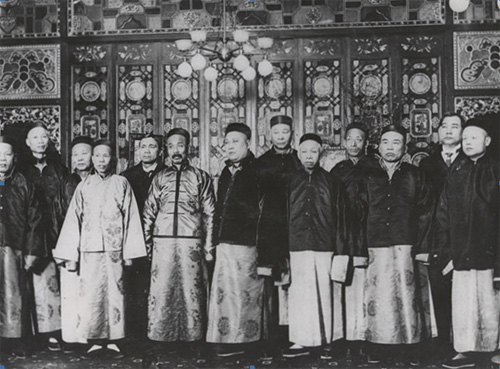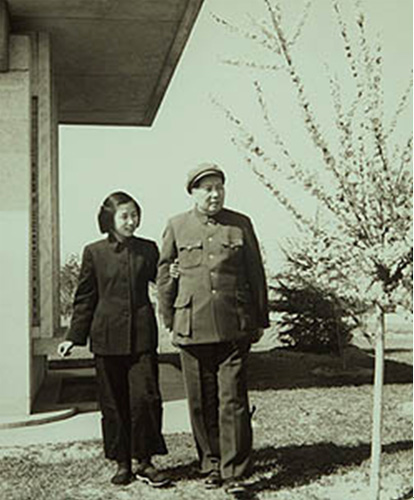|

|
|
The mandatory Manchu Changshan in all its glory...[Photo: Chine-informations.com]
|
The West may have had its sumptuously seductive Roaring Twenties, but that era was also a vibrant one in China. After the last dynasty came to an end in 1912, men adopted a new style installed by Sun Yat-sen; the Zhongshan. This item was meant to be a mixture of East and West, and was easily combined with scarves or hats. Sun died in 1925, but the Zhongshan suit became something of a staple garment during the revolutionary period, and its four pockets were even said to represent China's Four Virtues: Propriety, Justice, Honesty and Shame. All across the nation, whether fashionistos or not, were asked to wear this particular style after 1949, when Mao (Zedong, the one and only) entered the runway.
The Zhongshan suit was renamed the Mao suit and meant the start of commune-like proletarian uniformity, with the word "uniformity" taken very much to the letter. The Mao-suit became a trend as well as a symbol for unity (as displayed by the "design" of the back; no pleats or adjustments whatsoever) of the 1960s and 70s for both men and women.
|

|
|
Mao Zedong in the Zhongshan, later known as the Mao-suit. Sun Yat-sen, who became the first provisional president of the Republic of China in 1911, was actually credited with revolutionizing Chinese men's dress, even incorporating German military elements. Really. [Photo:Powerhousemuseum.com]
|
But then along came Deng Xiaoping, who revolutionized both the nation's economy and sowing machines. Since then, creativity has been pulled out of the closet once again after spending 30 years on a hanger. The Chinese post-1980s man (80hou, an official term referring to all those born after the implementation of the one-child-policy) takes a strong interest in his appearance and turns to GQ for fashion advice. Yet history is still present in modern day clothing, be it in terms of fabric or print; the details which the Chinese still incorporate into their outfits were present in the nation hundreds to thousands of years ago -- there's currently even a Hanfu Movement out there. Rocking your roots -- true that.
Fashionistas United:
Set your own tone by walking the fine line between classic and modern, but don't try too hard.
 0 Comment(s)
0 Comment(s) Print
Print E-mail China.org.cn, May 18, 2013
E-mail China.org.cn, May 18, 2013








Go to Forum >>0 Comment(s)